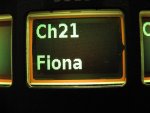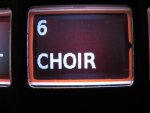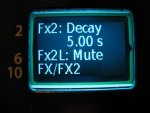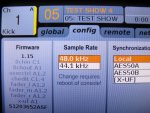Re: X32 Discussion
safe shutdown is now combined with the console lock function. Just hold the home button depressed for like 5 s. While the console is locked, the previous state was stored, and it is pretty safe to shut the console down any time you like. Note however, that the lock function will only lock the control surface, but the console will still be responding to any remote control via osc.
If you read the 2.0 release notes, you might know that the new lock function also allows to hold some arbitrary buttons depressed while locking. The console can only be unlocked when pressing the exact same buttons again together with Home.
Cheers to everybody from a busy ISE show in Amsterdam, which just opened its doors.
best,
Jan
Hi Johnny,Hi All,
... The safe power down feature, Is it gone?
safe shutdown is now combined with the console lock function. Just hold the home button depressed for like 5 s. While the console is locked, the previous state was stored, and it is pretty safe to shut the console down any time you like. Note however, that the lock function will only lock the control surface, but the console will still be responding to any remote control via osc.
If you read the 2.0 release notes, you might know that the new lock function also allows to hold some arbitrary buttons depressed while locking. The console can only be unlocked when pressing the exact same buttons again together with Home.
Cheers to everybody from a busy ISE show in Amsterdam, which just opened its doors.
best,
Jan





